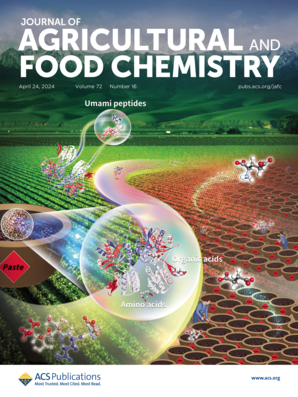Mechanism Exploration of Dietary Supplement Astaxanthin on Improving Atherosclerosis through an Integrated Strategy Encompassing Artificial Intelligence Virtual Screening and Experimental Validation
IF 5.7
1区 农林科学
Q1 AGRICULTURE, MULTIDISCIPLINARY
引用次数: 0
Abstract
Atherosclerosis (AS) is a major and common pathological basis of ischemic intestinal infarction, myocardial infarction, stroke, renal failure, and other highly lethal and disabling diseases. Current pharmacological interventions (e.g., statins) often cause adverse effects, limiting their long-term use. Natural compounds, with their multitarget efficacy and superior safety profiles, have emerged as promising alternatives for AS treatment. As a potent antioxidant carotenoid, astaxanthin exhibits unique therapeutic potential by simultaneously targeting inflammation, oxidative stress, and lipid metabolism, which are key drivers of AS pathogenesis. This study will systematically decipher astaxanthin’s therapeutic mechanisms through an integrative strategy encompassing artificial intelligence virtual screening and experimental validation. Notably, five proteins, including CTSD, DPP4, FABP5, ITGAL, and MMP9, were identified as core targets for astaxanthin intervention in AS via network pharmacology and machine learning. Meanwhile, the results from molecular dynamic simulations confirmed that these core targets can stable binding with astaxanthin. Furthermore, in vitro experiments further validated astaxanthin can inhibit foam cell formation, restore redox balance, and suppress inflammation. Moreover, a close correlation has been found between them. These findings position astaxanthin as a multitarget natural agent to combat AS, addressing both efficacy advantage and safety concerns of current therapies.

基于人工智能虚拟筛选和实验验证的膳食补充剂虾青素改善动脉粥样硬化的机制探索
动脉粥样硬化(AS)是缺血性肠梗死、心肌梗死、脑卒中、肾功能衰竭等高致死性致残性疾病的主要共同病理基础。目前的药物干预(例如,他汀类药物)经常引起不良反应,限制了它们的长期使用。天然化合物具有多靶点疗效和优越的安全性,已成为治疗as的有希望的替代品。作为一种有效的抗氧化类胡萝卜素,虾青素同时靶向炎症、氧化应激和脂质代谢,这是As发病的关键驱动因素,具有独特的治疗潜力。本研究将通过人工智能虚拟筛选和实验验证相结合的综合策略,系统地解读虾青素的治疗机制。值得注意的是,通过网络药理学和机器学习,CTSD、DPP4、FABP5、ITGAL和MMP9等5个蛋白被确定为虾青素干预as的核心靶点。同时,分子动力学模拟结果证实了这些核心靶点能够稳定地与虾青素结合。体外实验进一步证实虾青素具有抑制泡沫细胞形成、恢复氧化还原平衡、抑制炎症的作用。此外,它们之间还存在着密切的相关性。这些发现将虾青素定位为对抗as的多靶点天然药物,解决了当前治疗的疗效优势和安全性问题。
本文章由计算机程序翻译,如有差异,请以英文原文为准。
求助全文
约1分钟内获得全文
求助全文
来源期刊
CiteScore
9.90
自引率
8.20%
发文量
1375
审稿时长
2.3 months
期刊介绍:
The Journal of Agricultural and Food Chemistry publishes high-quality, cutting edge original research representing complete studies and research advances dealing with the chemistry and biochemistry of agriculture and food. The Journal also encourages papers with chemistry and/or biochemistry as a major component combined with biological/sensory/nutritional/toxicological evaluation related to agriculture and/or food.

 求助内容:
求助内容: 应助结果提醒方式:
应助结果提醒方式:


